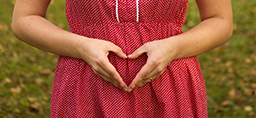
If you’re pregnant, one of the most exciting days is the birth day of your new child.
For nearly a year you’ve been eating healthy, visiting your OB-GYN, attending childbirth classes and preparing for the arrival of your new family member. You’ve no doubt spent a lot of time waiting and wondering, which inevitably makes the delivery day truly special when it arrives.
But there are some perspectives on labor and delivery that you may not have considered. Have you ever heard of the three P’s of labor? What about the four P’s, or even the five P’s?
The three P’s are passenger, passage and power. The two extra P’s stand for psyche and preparation.
Let’s take a look.
Passenger
If you’re pregnant, obviously you’re carrying a baby. So the P in this instance—passenger—refers to your baby.
And your baby needs to be in the most ideal position for birth.
How so? A baby who arrives breech—meaning butt- or feet-first—will need to be born via Cesarean section. Very few doctors will perform a vaginal delivery with a breech baby.
The earlier your baby is born, the greater the chance he or she will arrive in a breech position. Keep in mind this is just a greater chance. One of my children, delivered at 32 weeks, was born vaginally in a head-down position.
Statistically, 25% of babies born at 28 weeks are born breech, but only about 10% of babies born at week 34 are born breech. Only 3-4% remain in a breech position when mom reaches full term.
The left occiput anterior position, often called the LOA position, is one of the best positions for delivery. This is when the baby is head down, facing the mom’s back—essentially looking between the spine and right hip of mom. The baby’s back is on the left side of mom. This position helps the baby fit best through the narrowest part of the pelvis.
Another ideal position is occiput anterior, often called OA, which is when the baby is facing directly toward mom’s spine.
Passage
The passenger needs a passage—in this case, the pelvis.
The male pelvis and the female pelvis are quite different. The female pelvis is larger and broader than the male’s. The female pelvis is also oval shaped while the male pelvis is more of a heart shape.
More importantly, the female pelvis has a larger inlet that provides space for the baby to emerge. The ligaments in a pregnant woman’s pelvis will stretch because of the hormone relaxin. This allows for a slight separation in the front of the pelvis, making room for baby.
About 1 in 300 pregnant moms may experience symphysis pubis dysfunction, which is when the ligaments stretch too much. Usually at the beginning of pregnancy the OB provider will check the size of the mom’s pelvis. Only if there is a problem will a practitioner inform mom about any findings.
Power
Power refers to contractions, or waves. The tightening of the uterus helps move the baby down through the birth canal. It’s a natural process that’s needed for the birth of the baby.
During labor, we look at the duration and strength of the contractions, as well as how close together they are. This can be assessed by a fetal monitor or intermittent fetal monitoring. The only way to assess the strength—unless an intrauterine catheter is used—is by palpation, or feeling the uterus during a contraction.
Psyche
This refers to the mom’s mental preparation and her readiness for delivery. Giving birth is a tremendous physical event, but it’s also a huge mental undertaking. You can and should start preparing yourself mentally.
Preparation
Moms and their partners and families prepare for the arrival of the baby in a multitude of ways—showers, gift-giving, prepping the baby’s room, shopping for car seats and strollers and so on.
But do they truly prepare for the birth? Some important ways to prepare include:
• Attend childbirth classes
• Research and read about birth topics
• Avoid negative stories
• Be proactive and prepare
Some great authors to check out on the topic of birth: Ina May Gaskin and Penny Simkin.
 /a>
/a>
 /a>
/a>
 /a>
/a>